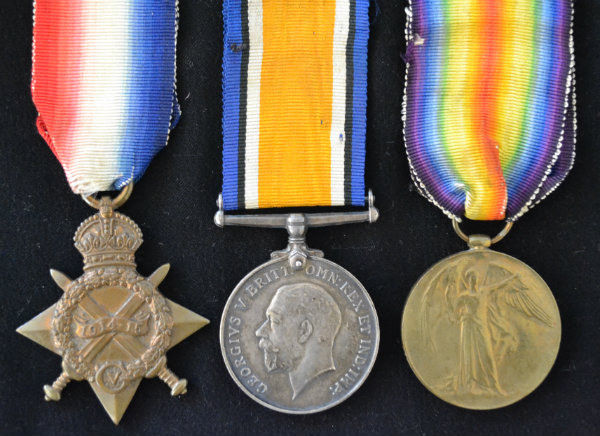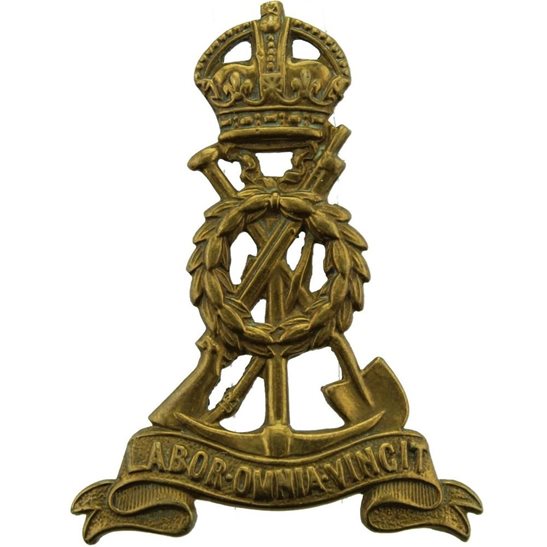Personal Details
Born: 29 May 1891 in Whitchurch, Shropshire.
Family: He was the eldest child of Charles Leonard Blencowe, a baker, and his wife Margaret Winifred, nee O’Hara. His siblings were Catherine, Albert, Charles, Frank, Percy, George and Harry. William married Miriam Maud Ette in Northampton in 1919 and together they had 5 children – Miriam J, George E, Justina M, William L and Roy J.
Residence: On the 1901 Census the family were living at 43 Yardington Street, Whitchurch, Shropshire. By 1911 they had moved to 30 Bargates, Whitchurch, Shropshire. This was the address shown for him on the Spring 1919 Absent Voters List. In 1939 the family were living at 64 Blenheim Road, Northampton.
Employment: On the 1911 Census he is described as a labourer in an iron foundry. In 1939 he was a foreman working in a railway goods yard.
Died: In 1964 in Northampton, aged 73.
Military Details
Regiment: Labour Corps. (previously Cheshire Regiment)
Rank: Private
Service Number: 360575 (previously 1635)
Date of Enlistment: Not known
Date of Discharge: Not known
Reason for Discharge: Not known
Other Information: His brothers Albert, Frank, Percy and George also served in WW1. Percy was killed in action in Belgium on 8 July 1917 aged 20. The other brothers survived the war. His youngest brother Harry enlisted but after two months was found to be under age and was discharged. He subsequently rejoined the Army but we have no record of the actual date.
William first served in the Balkans from 19 September 1915.
William was awarded the Campaign Medals (British War Medal, Victory Medal and 1914/15 Star).

The 1914 Star (also known as 'Pip') was authorised under Special Army Order no. 350 in November 1917 and by an Admiralty Fleet Order in 1918, for award to officers and men of the British and Indian Expeditionary Forces who served in France or Belgium between 5 August and midnight of 22–23 November 1914. The former date is the day after Britain's declaration of war against the Central Powers, and the closing date marks the end of the First Battle of Ypres.
The 1914–15 Star (also known as 'Pip') was instituted in December 1918 and was awarded to officers and men of British and Imperial forces who served against the Central European Powers in any theatre of the Great War between 5 August 1914 and 31 December 1915. The period of eligibility was prior to the introduction of the Military Service Act 1916, which instituted conscription in Britain.
The British War Medal (also known as 'Squeak') was a silver or bronze medal awarded to officers and men of the British and Imperial Forces who either entered a theatre of war or entered service overseas between 5th August 1914 and 11th November 1918 inclusive. This was later extended to services in Russia, Siberia and some other areas in 1919 and 1920. Approximately 6.5 million British War Medals were issued. Approximately 6.4 million of these were the silver versions of this medal. Around 110,000 of a bronze version were issued mainly to Chinese, Maltese and Indian Labour Corps. The front (obv or obverse) of the medal depicts the head of George V. The recipient's service number, rank, name and unit was impressed on the rim.
The Allied Victory Medal (also known as 'Wilfred') was issued by each of the allies. It was decided that each of the allies should each issue their own bronze victory medal with a similar design, similar equivalent wording and identical ribbon. The British medal was designed by W. McMillan. The front depicts a winged classical figure representing victory. Approximately 5.7 million victory medals were issued. Interestingly, eligibility for this medal was more restrictive and not everyone who received the British War Medal ('Squeak') also received the Victory Medal ('Wilfred'). However, in general, all recipients of 'Wilfred' also received 'Squeak' and all recipients of The 1914 Star or The 1914/1915 Star (also known as 'Pip') also received both 'Squeak' and 'Wilfred'. The recipient's service number, rank, name and unit was impressed on the rim.

